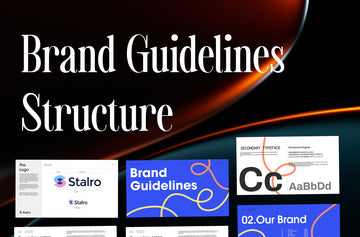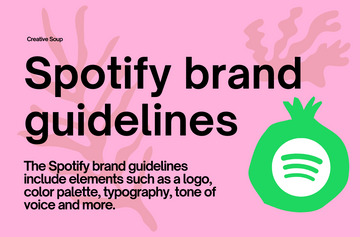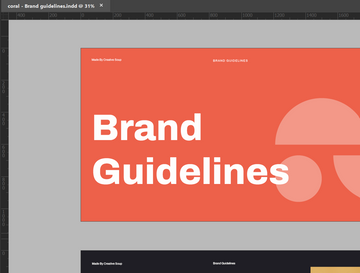Introduction
In today's competitive business landscape, establishing a strong and consistent brand presence is crucial for success. Brand guidelines play a pivotal role in ensuring that a brand maintains its identity and communicates effectively with its target audience. This article delves into the importance of brand guidelines, their elements, and provides insights into creating, implementing, and maintaining an effective brand guidelines structure.
Importance of Brand Guidelines
Brand guidelines serve as a blueprint for maintaining brand consistency across all communication channels. They provide a clear set of rules and standards that dictate how a brand should be represented visually and verbally. By following brand guidelines, companies can establish a cohesive and recognizable brand identity, build trust among their customers, and differentiate themselves from competitors.
Defining Brand Guidelines
Brand guidelines are a comprehensive set of instructions that define how a brand should be portrayed in various contexts. They encompass visual elements, such as logos, typography, colors, imagery, as well as the brand's tone of voice and messaging. These guidelines ensure that all brand-related materials, whether created internally or by external partners, align with the brand's essence and values.
Basics Elements of Brand Guidelines
4.1 Logo Usage and Placement
The logo is a fundamental element of brand identity. Brand guidelines outline specifications for logo usage, including size, placement, clear space, and variations. These guidelines ensure consistent representation of the logo across different mediums, maintaining brand recognition.
4.2 Typography and Fonts
Typography plays a vital role in brand communication. Brand guidelines specify the typefaces, font sizes, and formatting guidelines to be used consistently across all materials. This ensures that the brand's messaging is visually cohesive and aligns with its personality.
4.3 Color Palette
Colors evoke emotions and play a significant role in brand perception. Brand guidelines define the primary and secondary color palette, providing hex codes or Pantone numbers. These guidelines ensure consistent color usage and create a visually harmonious brand experience.
4.4 Imagery and Photography
Guidelines related to imagery and photography outline the style, subject matter, and quality of visuals associated with the brand. From specific image treatments to guidelines for using stock photography, these instructions maintain a consistent visual identity.
4.5 Tone of Voice
The tone of voice guidelines establish the brand's personality in written communication. It defines the brand's voice, style, and language to be used across marketing materials, social media, customer support, and other touchpoints. Consistency in tone helps build brand recognition and fosters a connection with the target audience.
4.6 Examples of Brand Guidelines
Brand guidelines often include examples that showcase how the brand identity should be executed. These examples provide visual references and serve as inspiration for designers and content creators to maintain consistency.
4.7 What's Creative Soup brand guidelines includes

Save your time with Galaxy Brand Guidelines Template ready-to-use template that works perfectly in Adobe Indesign, Adobe Illustrator, PowerPoint, Google Slides, and Canva. All you need to do is open the file, Change the logo and colors representing the brand you’re working for, then save the Template as a PDF. and done! we’ve done all the hard work for you. Congratulation!
The Galaxy Brand Guidelines offer a flexible and user-friendly solution. It has a clean and organized layout that serves as a solid foundation for brand identity handover. The template includes 10 sections for a comprehensive brand package, such as a brand overview, logo, color palette, typography, imagery, and real-life brand examples. It provides a clear and straightforward guide for your clients to navigate through the final delivery files easily.
Creating Effective Brand Guidelines
5.1 Understanding Your Brand Identity
Before creating brand guidelines, it is crucial to have a clear understanding of the brand's identity, values, and goals. Conducting brand workshops and defining brand archetypes can help establish a solid foundation for the guidelines.
5.2 Researching Your Target Audience
Understanding the target audience is vital for creating effective brand guidelines. Research their preferences, demographics, and communication channels to ensure the guidelines resonate with them.
5.3 Consistency and Coherence
Consistency is the key to building a strong brand presence. Brand guidelines should emphasize the importance of consistent visual and verbal communication across all platforms. This ensures that the brand remains recognizable and memorable.
5.4 Flexibility and Adaptability
While consistency is crucial, brand guidelines should also allow for flexibility and adaptability. They should provide guidelines for adapting the brand's visual identity to different mediums and contexts without compromising its core essence.
5.5 Accessibility and Inclusivity
Modern brand guidelines should consider accessibility and inclusivity. Guidelines should address issues such as accessible color contrast, font legibility, and inclusive language, ensuring the brand's message reaches all audiences.
Implementing and Communicating Brand Guidelines

6.1 Internal Communication
It is essential to effectively communicate brand guidelines within the organization. Conduct training sessions, provide style guides, and encourage employees to become brand ambassadors. This ensures consistent brand representation across teams and departments.
6.2 External Communication
Brand guidelines should be shared with external partners, such as agencies or freelancers, to ensure a cohesive brand experience across all touchpoints. Clear communication of guidelines helps maintain brand integrity throughout collaborations.
6.3 Training and Education
Continuous training and education are necessary to reinforce brand guidelines. Conduct workshops, webinars, or create an internal knowledge base to keep employees updated on the brand's visual and verbal identity.
Maintaining and Updating Brand Guidelines
7.1 Regular Audits and Reviews
Brand guidelines should be periodically audited and reviewed to ensure their effectiveness and relevance. Feedback from stakeholders and insights gained from brand performance analysis can help refine and enhance the guidelines over time.
7.2 Evolution with Market Trends
Market trends evolve, and so should brand guidelines. Regularly assess the industry landscape and competitor strategies to identify opportunities for growth and adaptation. Update the brand guidelines accordingly while maintaining consistency.
Conclusion
Strong brand guidelines are the foundation for a consistent and memorable brand identity. By defining and following brand guidelines, companies can effectively communicate their values, build trust, and foster long-lasting connections with their target audience.
FAQs
-
What is the purpose of brand guidelines? Brand guidelines serve as a reference for maintaining brand consistency and ensuring all brand-related materials align with the brand's identity.
-
Why is it important to define the brand's tone of voice? Defining the brand's tone of voice establishes consistency in written communication and helps build brand recognition.
-
How often should brand guidelines be updated? Brand guidelines should be regularly reviewed and updated to stay aligned with market trends and evolving brand strategies.
-
How can brand guidelines be communicated internally? Internal communication of brand guidelines can be facilitated through training sessions, style guides, and encouraging employees to become brand ambassadors.
-
What role does flexibility play in brand guidelines? Flexibility allows for adapting the brand's visual identity to different mediums and contexts without compromising its core essence.







